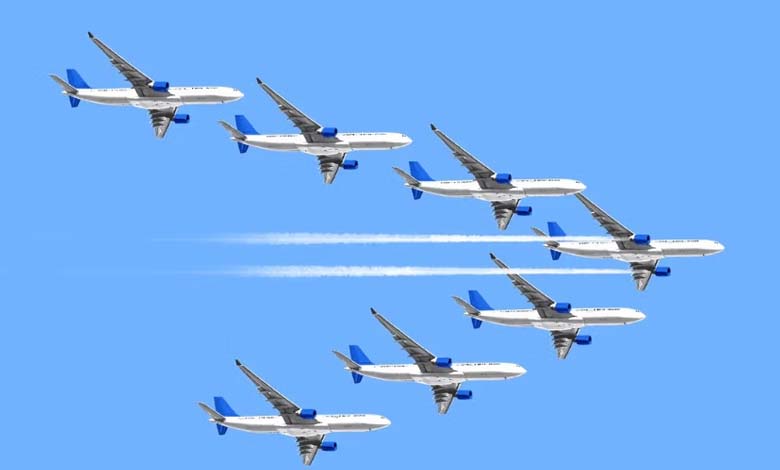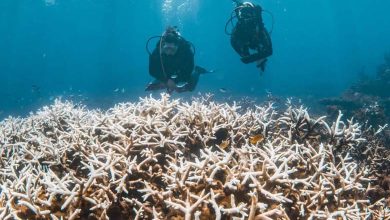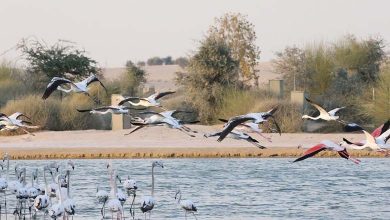“Delta” and “Airbus”: Flying Planes Together Like Geese Reduces Emissions

The American airline Delta Airlines is celebrating its first century by partnering with Airbus and drawing inspiration from an ancient natural phenomenon to save energy, according to the German Press Agency (DPA).
-
Why Does Food Taste Different on Airplanes?
-
Rising Travel Rates Undermine Plans for “Sustainable Aviation”
The “biomimicry” experiment examines how flying aircraft close together over long distances can conserve energy and promote sustainable air travel. This concept is inspired by the V-shaped flight formation of migrating geese, according to Travel Tomorrow.
A press release explained that this collaborative flying technique, known as “fello’fly”, has the potential to reduce energy consumption and consequently lower the environmental impact of commercial aviation.
This technology, referred to as wake energy retrieval, involves positioning one aircraft behind another to take advantage of the updraft created by the lead plane. This upward airflow naturally lifts the trailing aircraft, reducing the required engine thrust and, in turn, fuel consumption.
This is the same principle used by certain bird species to conserve energy during long seasonal migrations.
After successful laboratory testing, the sustainability benefits are significant. The first successful transatlantic flight using this technique has validated the concept. According to tests conducted by NASA, flying in a formation like this could reduce carbon dioxide emissions by at least 5% per flight.
-
Plane Crash in Costa Rica… Uncertainty Surrounds Passengers’ Fate
-
Slovenia: 3 Dead in Small Plane Crash Due to Fog












